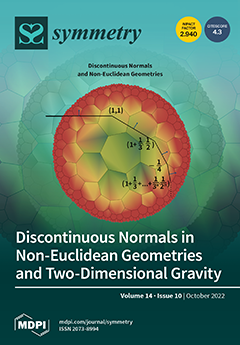We describe the behavior of an Ising model with orthogonal dynamics, where changes in energy and changes in alignment never occur during the same Monte Carlo (MC) step. This orthogonal Ising model (OIM) allows conservation of energy and conservation of (angular) momentum to proceed independently, on their own preferred time scales. The OIM also includes a third type of MC step that makes or breaks the interaction between neighboring spins, facilitating an equilibrium distribution of bond energies. MC simulations of the OIM mimic more than twenty distinctive characteristics that are commonly found above and below the glass temperature,
. Examples include a specific heat that has hysteresis around
, out-of-phase (loss) response that exhibits primary (
α) and secondary (
β) peaks, super-Arrhenius
T dependence for the
α-response time (
), and fragilities that increase with increasing system size (
N). Mean-field theory for energy fluctuations in the OIM yields a critical temperature (
) and a novel expression for the super-Arrhenius divergence as
:
. Because this divergence is reminiscent of the Vogel-Fulcher-Tammann (VFT) law squared, we call it the “VFT2 law”. A modified Stickel plot, which linearizes the VFT2 law, shows that at high
T where mean-field theory should apply, only the VFT2 law gives qualitatively consistent agreement with measurements of
(from the literature) on five glass-forming liquids. Such agreement with the OIM suggests that several basic features govern supercooled liquids. The freezing of a liquid into a glass involves an underlying 2nd-order transition that is broadened by finite-size effects. The VFT2 law for
comes from energy fluctuations that enhance the pathways through an entropy bottleneck, not activation over an energy barrier. Values of
vary exponentially with inverse
N, consistent with the distribution of relaxation times deduced from measurements of
α response. System sizes found via the
T dependence of
from simulations and measurements are similar to sizes of independently relaxing regions (IRR) measured by nuclear magnetic resonance (NMR) for simple-molecule glass-forming liquids. The OIM elucidates the key ingredients needed to interpret the thermal and dynamic properties of amorphous materials, while providing a broad foundation for more-detailed models of liquid-glass behavior.
Full article





